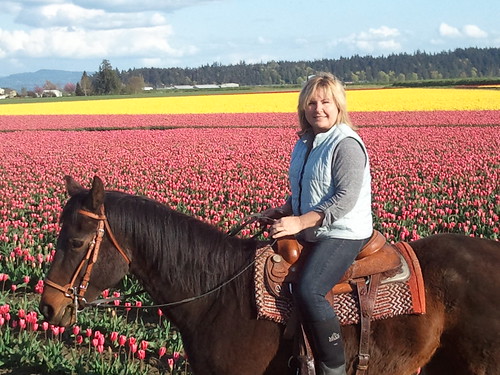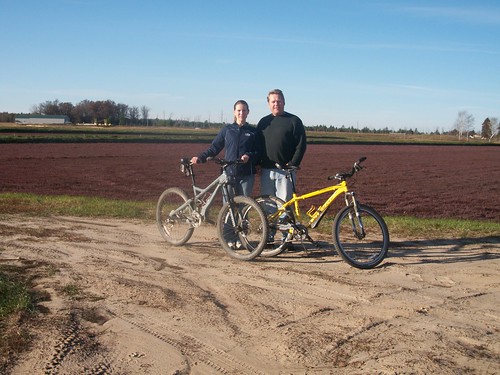
In honor of Mother’s Day, USDA thanks the nearly 100 wonderful women growers and handlers for dedicating their time and service to their respective industries through our federal fruit and vegetable marketing order committees and boards. We spoke to a few about being a farmer, mother, and marketing order industry leader.
Kelly McKnight, of the Washington Potato Committee, is a mother of four and a fifth- generation farmer. McKnight learned the ins and outs of marketing orders from her neighboring potato farmers, alongside an extended network of fellow farmers’ daughters recruited to the committee. Although the industry is small, McKnight credits the marketing order presence and members for keeping it strong. The committee serves as a network of support, mentorship, and resources, and further builds relationships with related organizations.
The marketing order principle of promoting the overall quality of the industry’s varied products gives smaller farms and regions equal footing to meet consumer needs. As a family business, McKnight and her brother oversee 600 acres of potatoes, aided by her two sons, assorted nephews, and other employees.
Kathy Fry is celebrating 15 years at the helm of the Walla Walla Sweet Onion Marketing Committee and the Walla Walla Sweet Onion Festival. In her time with the industry, she helped this annual festival grow from a one-day gathering of locals, to a flourishing two-day main attraction attended by 10,000 people, 40 vendors, and assorted treats from caramel onions to blooming onions. While the industry has been around for more than a century, the marketing order helped launch the Walla Walla sweet onion brand and unite the region in 1995.
“The marketing order is our strongest defense,” said Fry. “It is critical to the integrity and protection of our name and production area. Every day I get calls from people asking where they can get Walla Walla sweet onions; they love them!” Although industry size has declined, the committee continues to find new markets and new members. Over the last few years, they recruited new producers, including a fourth-generation farmer who has returned to the land and now serves as the committee’s chairman. “If we get new blood, we grab them right away!” Fry noted this infusion of talent and an enduring appreciation for the crop is what will keep the Walla Walla sweet onion reputation going strong for another 100 years.

Jill Amundson has been a devoted cranberry grower for 23 years. “Growing up, you could have told me cranberries grew on trees and I would have believed you,” Cranberry Marketing Committee chairwoman Jill Amundson teased. Amundson came to the industry by way of her husband, a third-generation Wisconsin grower. She learned the craft from scratch, nurturing some 300 acres of marshes with her husband while raising two boys. Ten years ago, Amundson joined the committee as an Ocean Spray Cooperative member. She was intrigued by the marketing order, even read the statute cover to cover. Amundson’s favorite project is the committee’s baking seminars for international grocery stores which use the samples in store-baked goods, generating consumer interest in the dried fruit.
Medora Krome is a life-long Avocado Administrative Committee member. Her father, William Krome, helped establish the marketing order in 1955, and developed its most critical avocado maturity schedule. Krome recalls spending her childhood with her parents and siblings testing hundreds of pieces of fruit, of the same variety and across developing varieties, for maturity, quality, taste, and texture. While learning the ropes of the industry meant never going away for the summers, Krome credits her parents’ tireless work ethic as a shining beacon for her career. “They worked together, both within the family and in industry matters, and taught us the importance of community participation,” said Krome. She has attended committee meetings with her dad since youth, and now carries on his legacy and dedication as a respected leader in the industry. “My husband and daughter understand the tough demands of the industry – even when I go out in the night to check on the fields.” As the current chairperson, she works with industry leaders and scientists to help find a solution to the current disease problem. “I want to ensure the survival of the industry so that I can pass on this legacy to the next generation.”
These are only a few of the stories of the women in the agricultural business, and only a sliver of the tremendous contributions they make every day. Although only 14 percent of the nation’s 2.1 million farms have a female principle operator according to the 2012 Census of Agriculture, the number of women entering farming increased by 30 percent between 2002 to 2007. The breadth of entry points and experience levels are rivaled only by the depth of care for their farm-ilies (farms and families). This Mother’s Day, please join all of us here at USDA as we give thanks to the special matriarchal figures in our lives.
